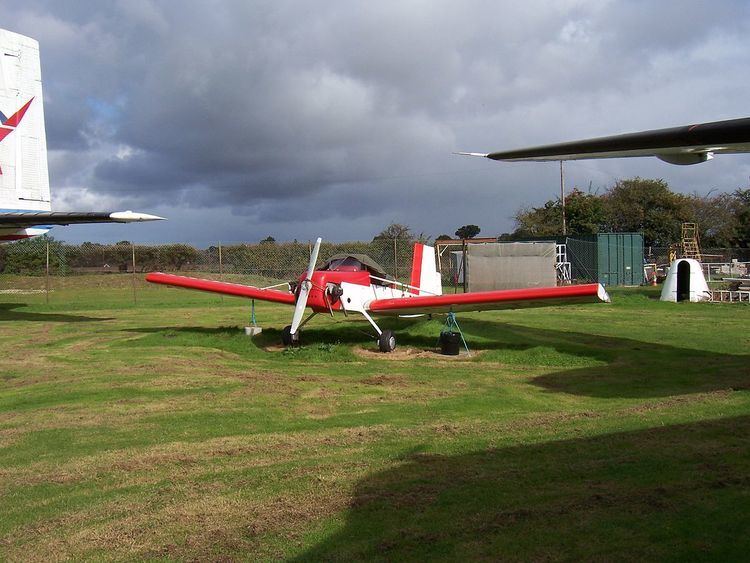 | ||
The Evans VP-2 is a development of the Evans VP-1 Volksplane, both of which were designed in La Jolla California by William Samuel Evans a design specialist with the aircraft company Convair.
Contents
Background
Work on the design of the VP-1, was completed between 1966 and 1968, the intention being that the design would be simple to build for a novice working at home. The design was successful, and, following a first flight in September 1968, a large number of aircraft have been constructed by homebuilders. The aircraft are powered by converted Volkswagen air-cooled engines.
The VP-1 is a single-seat open-cockpit low-wing monoplane manufactured from Spruce and plywood with fabric covered wings. Performance is typically a cruise speed of 75 mph (121 km/h) and a stall speed of 40 mph (64 km/h).
Following the success of the VP-1 a two-seat variant, the VP-2 was designed and the first example flew in 1971. The VP-2 is externally similar in appearance to the VP-1 but with a 1 ft (30 cm) wider fuselage to accommodate two side-by-side configuration seats. The aircraft is 1 ft (30 cm) longer and has a 3 ft (0.9 m) addition to wingspan. The VP-2 can use any Volkswagen air-cooled engine model from 1834 to 2100 cc.
Preserved examples
Specifications (60 hp engine)
Data from Jane's All The World's Aircraft 1982–83
General characteristics
Performance
